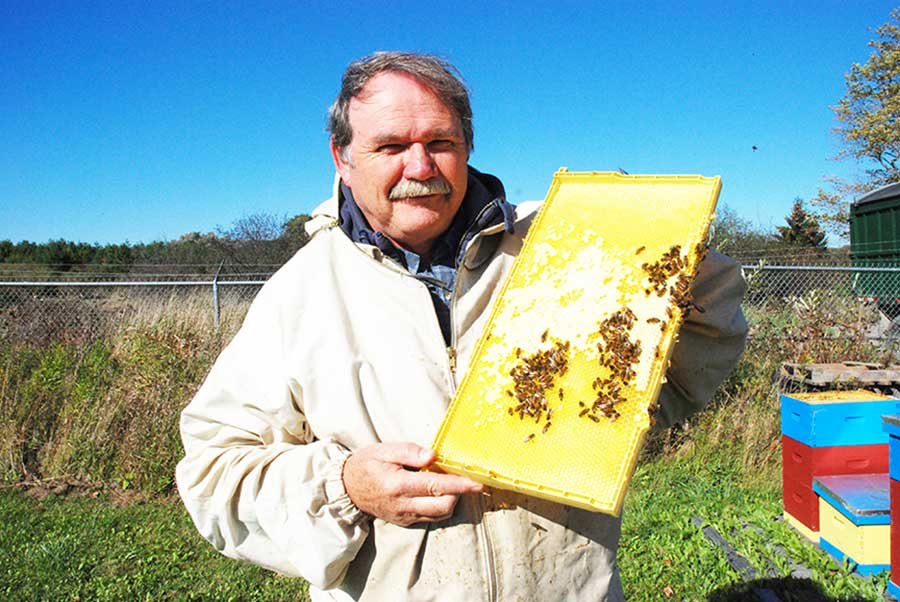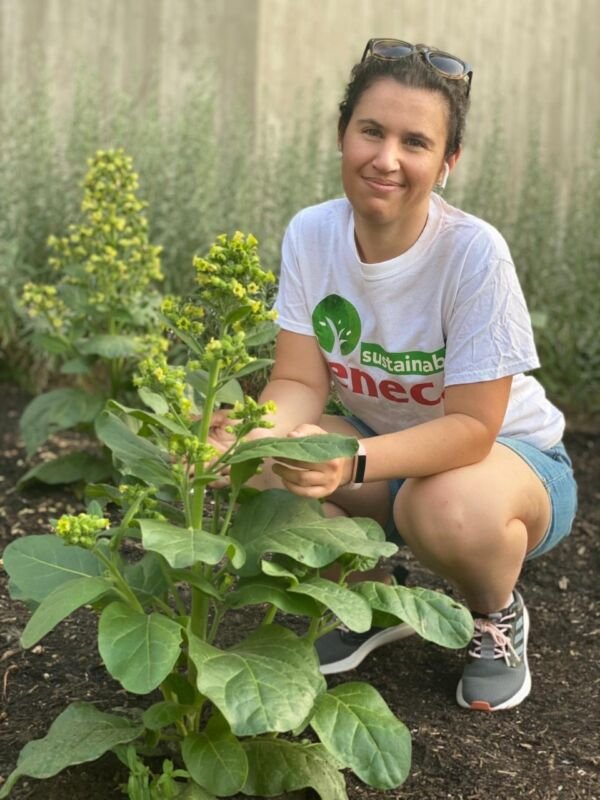Sustainable Seneca- Building Partnerships across Academics, Operations, Community and Culture
Exciting changes are afoot at Seneca, which now includes more than 45,000 full-time students and more than 45,000 part-time registrants. With the recently established Office of Sustainability, the institution is now putting its core values front and centre in a way that embodies “sustainable Seneca.”
Don Forster, Director of Seneca’s Office of Sustainability
“The mission of the Office of Sustainability is to integrate sustainability into all aspects of Seneca, making us the sustainable Seneca. From the top down, we want to act as a connector of all moving parts — creating an environment that encourages applied research and innovative sustainability projects, including meaningful partnerships within and outside of Seneca, bringing together all stakeholders in our sustainability mission,” says Don Forster, Director of Seneca’s Office of Sustainability.
Sustainability has always been a priority for Seneca, and its new mandate acknowledges this core value in a groundbreaking comprehensive way. “It’s a strategic vision of renewal that includes changes in things like procedures, behaviour, transportation, infrastructure. More than a buzz word, a project or even an office, it’s now clearly a foundation of academic, operations, community, and culture,” adds Forster.
Courtney Hayes, Sustainability Specialist, Operations, at Seneca’s Office of Sustainability
“We all see the impacts of climate change and its associated consequences on the news, across Canada and the world,” says Courtney Hayes, Sustainability Specialist, Operations, at Seneca’s Office of Sustainability. “As institutions, we are members of a global community, welcoming students and staff from all backgrounds and home countries. We are also a living lab seeking solutions to build the future that we wish to see. Our students are pushing for colleges and universities to be leaders in this space and provide them with the tools to make change.”
Forster and Hayes describe just a few of Seneca’s action items:
Embedding objectives to reduce carbon footprint and save energy into their procurement plan, discerning where there’s the most bang for the buck, and auditing current infrastructure for big and small changes — like solar panels and energy monitoring systems. And Hayes agrees many opportunities are not invasive or involve tearing down existing infrastructure.
Adopting lessons learned from the pandemic about remote learning, how to optimize the learning experience while minimizing travel and commuting.
Embedding carbon literacy into curriculum.
Supporting faculty in how they can incorporate this sustainability mission into their teaching.
Inspiring innovation and collaboration with events like the annual Green Citizen Symposium for the Seneca community to learn and brainstorm on environmental stewardship, along with hands-on workshops tied to student curriculums.
Encouraging creativity across the Seneca community, connecting the dots between all fields of study and sustainability values, from athletics to fashion.
Paula Echeveste Petrone, Sustainability Specialist, Outreach & Engagement, Seneca’s Office of Sustainability
Paula Echeveste Petrone, Sustainability Specialist, Outreach & Engagement, and Wai Chu Cheng, Sustainability Specialist, Academic, round out the driving forces that help deliver their mission:
Seneca received a silver star rating through the Association for the Advancement of Sustainability in Higher Education (AASHE) STARS, a transparent, self-reporting framework for colleges and universities that measures their sustainability performance, provides invaluable benchmarking. “The data collection exercise in itself taught us a lot and it helped us move forward with our sustainability plan, which was a huge thing. And then the sustainability plan helped us to set up the Office of Sustainability this past year,” explains Echeveste Petrone.
Wai Chu Cheng, Sustainability Specialist, Academic, Seneca’s Office of Sustainability
“What really makes a difference is senior leadership’s commitment. What I learned in my short time here is that the senior leadership is really committed to it. They set the tone for the whole organization by leading by example. The other factor is collaboration — genuine collaboration. And we have a sustainability committee that is made up of stakeholders from across the campus. Everyone is working together to make it happen,” says Cheng.
As long-standing champions of reducing carbon footprint of schools, colleges, universities, and all manner of public and private institutions, TCI and Nerva applaud Seneca for their vanguard role here. We look forward to exploring partnership possibilities with Seneca and other post-secondary institutions to help advance their important, far-reaching sustainability missions. And like the college, we hope their vision will become the norm one day across all educational settings.
To learn more about Seneca’s mission in sustainability, visit: https://www.senecacollege.ca/about/sustainability.html
What is sustainable Seneca?
Sustainable Seneca is one of the three pillars of Seneca Au Large, an initiative launched in the early weeks of the pandemic to transform and renew Seneca. In an effort to develop a comprehensive and ground-breaking approach to sustainability, we established Seneca’s Office of Sustainability and released our first sustainability plan last year. The plan builds on the work of the Sustainable Seneca Committee, which was created in 2016.
_
Seneca invites you to share your sustainability Mission and Vision.
Seneca is committed to creating meaningful partnerships with sustainability-oriented organizations, particularly to work together in collaborative projects, sustainability-focused events that bring together industry leaders and organizations. To learn more about a possible sustainability-focused partnership with Seneca, contact Don.Forster@senecacollege.ca.
-
The role of Seneca’s Office of Sustainability is two-fold: accomplishing the goals outlined in the sustainability plan and helping integrate sustainability across Seneca through each of our respective domains of action. These are mirrored in the sustainability plan, but our team goes beyond the plan by supporting each facet of Seneca to have sustainability be a part of our everyday decision-making and actions across all functional areas.
-
Academics and research are a core area of action for sustainability at Seneca. Our goal is to embed sustainability into the curriculum and expand applied research and living lab opportunities. This work is carried out by Wai Chu Cheng, who is our academics and research specialist and the head of the academics and research sub-committee under the Sustainable Seneca Committee.
-
By its nature, sustainability encompasses social justice, equity, accessibility, and cultural vitality. Without these components, an institution or society cannot achieve true sustainability. This is a whole segment of the sustainability conversation that merits its own interview, but Seneca simply does its part to ensure this by building in indicators of these factors into our project design and decision-making processes. This means both explicitly in the case of embedding disclosure requirements and credits of global reporting standards like STARS, the SDGs, LEED, GRI/SASB, etc. into our sustainable project design forms and initiatives.
-
Looking to the future, Seneca is building off our existing LEED-certified buildings in developing standards for new and existing buildings, as well as an integrated landscape design and maintenance plan that encompasses LEED requirements and other sustainability standards developed by the Office of Sustainability.
Looking to the future, Seneca is building off our existing LEED-certified buildings in developing standards for new and existing buildings, as well as an integrated landscape design and maintenance plan that encompasses LEED requirements and other sustainability standards developed by the Office of Sustainability.






